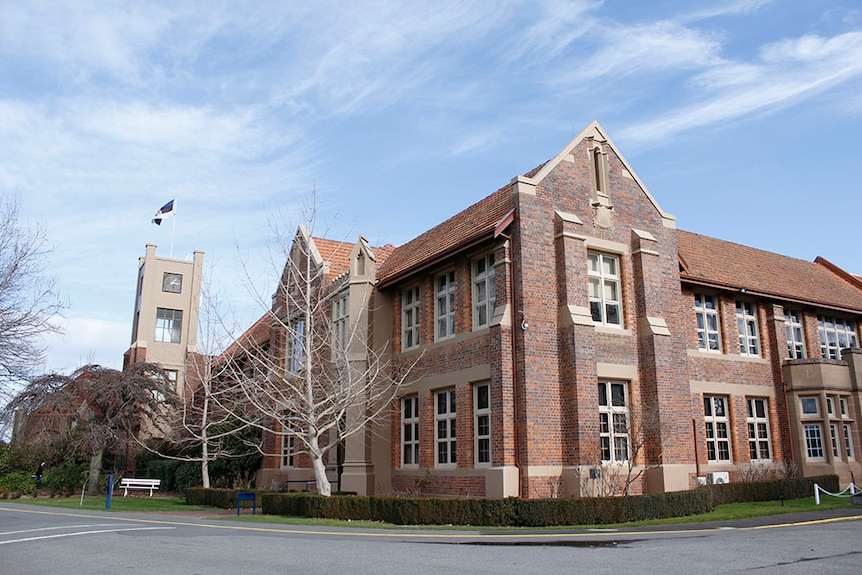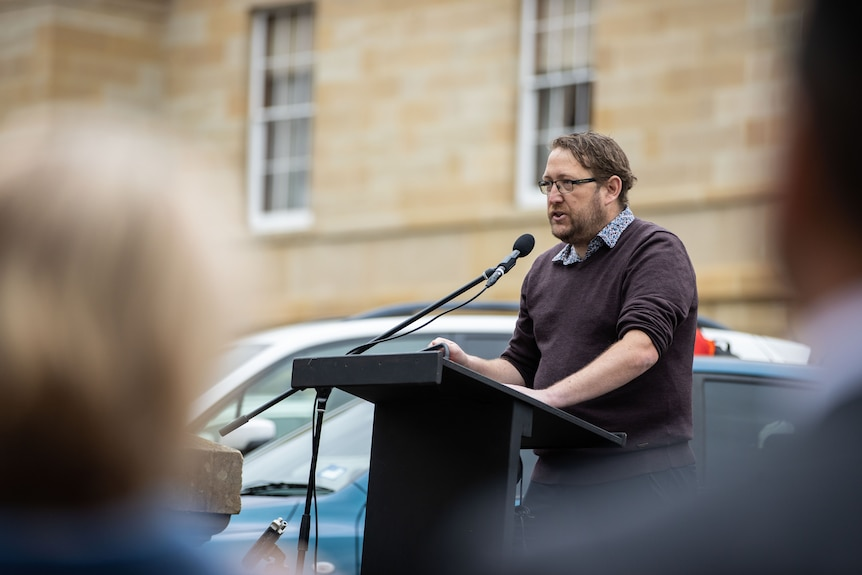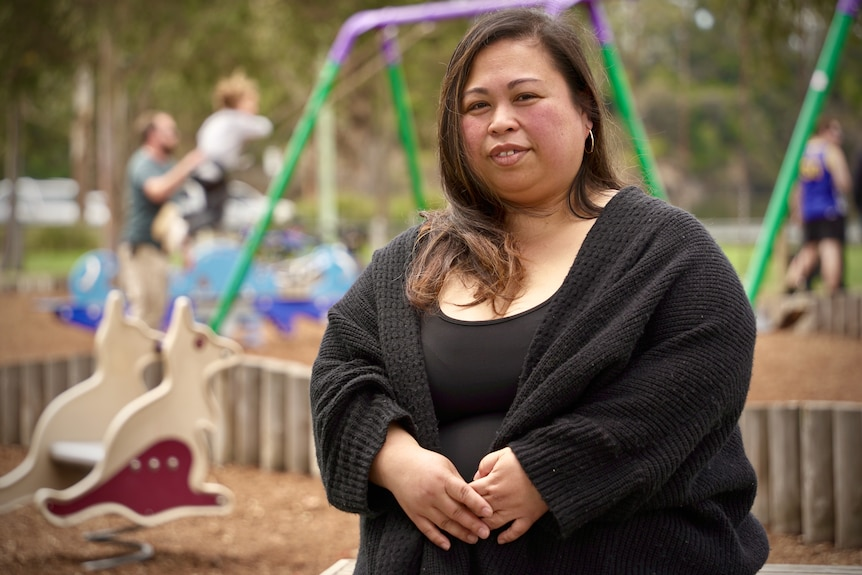
Nick Martin is no stranger to advocating for better investment in Tasmania's public school system.
Two of Mr Martin's children attend a public high school on the state's east coast that has suffered maintenance and structural problems including leaking pipes, non-compliant gas fittings, rotting joists and mould in classrooms.
Mr Martin, who is also chairman of the St Helens School Association, said while some of the problems have been fixed, it's clear to him that a lack of funding for public schools is what caused the issues in the first place.
"It's not a shortfall on the teacher's part, [but] the government really needs to step up, show some drive and initiative and give these kids every opportunity," he said.
"No matter where you go in this state, you should be able to walk in and the education that is given should be even across the board — and it's simply not."
A report by independent education economist Adam Rorris for the Australian Education Union shows chronic underfunding of public schools in every state and the Northern Territory is expected to worsen over the next five years.
In 2023, Tasmanian public schools were underfunded by $118 million, compared to private schools, which were overfunded by $7 million.
The report lists Scotch Oakburn College, Launceston Church Grammar School, The Friends School, Christian Schools Tasmania and The Launceston Preparatory School as overfunded private schools.

Tasmanian private schools were overfunded by $7 million this year, while public schools were underfunded by $118 million.(ABC News: Declan Gooch)
Public schools in Western Australia, South Australia, Tasmania and the Northern Territory were collectively underfunded by around $1.2 billion this year alone.
It is a problem that is projected to persist, with private schools set to be cumulatively overfunded by nearly $3 billion over the next five years.
"Since 2018, the gap in funding has only widened between public schools — where the vast majority of disadvantaged students are found — and private schools," the report said.
The report calls for all public schools to be fully funded to the Schooling Resource Standard (SRS) by 2028, which is the minimum level of funding required to meet the needs of students.
It found the gap between mandated minimum SRS funding and what schools actually received remained wide, with private schools overfunded by over $800 million in 2023 and public schools hit with a shortfall of $4.5 billion this year.
"If the Commonwealth and state/territory governments do not increase their funding commitments to a minimum of 100 per cent of the SRS, the shortfall in funding received by public schools will be between $6.2 and $6.5 billion every year for 2023-28," the report said.
Mr Martin said he is worried that inaction by federal and state governments will only result in worse education outcomes for Tasmanian students because they do not have access to resources.
"These kids are our greatest asset and that's the way that we need to treat them," he said.
"Kids are screaming out for the opportunity. They want the education, they want to be getting themselves set up for life.
"[Someone] needs to step up and really put some money into these schools."
Tasmania branch president of the Australian Education Union David Genford said the data does not come as a surprise.

The AEU Tasmania's David Genford said better funding for the state's public schools would mean less-overcrowded classrooms and extra support for teachers and students.( ABC News: Luke Bowden )
"Over the last 10 years, the federal government's contribution to private schools is 31 per cent, where it's only increased by 13 per cent in our public schools," he said.
"This shows the level we've started to see between the haves and the have-nots and it needs to change."
Mr Genford said better funding for the state's public schools would mean less overcrowded classrooms and extra support for teachers and students.
"In the real world, we know students are not getting the support they need — whether that be because the teacher's dealing with over 30 students in a classroom, or because [schools] can't afford to provide programs and support," he said.
"The point that we're making with the public school funding is that the money is there.
"We aren't asking for major changes to the system, we're asking for the system to be funded properly."
"We're just over kids falling through the cracks because the schools aren't funded correctly."
The Tasmanian Association of State School Organisations (TASSO) believes current funding practices are "pitting government and non-government schools against each other."
"Every child deserves their schooling to meet the minimum educational standards, and the unfair division of funding … is fostering unnecessary divisions," a TASSO spokesperson said.
Julie Pepperell's 7-year-old son Lincoln attends a mix of private and public school to suit his special needs.

Julie Pepperell has experienced the funding divide first-hand, with her son attending a mix of public and private schools. ( ABC News: Peter Curtis )
While Ms Pepperell and her son have only had good experiences at both schools, she said it's unfair that children in the public school system aren't afforded the same resources as those at private schools.
"A public school that doesn't have the same amount of equipment and capabilities and everything like that, because they're underfunded — that's a shame."
"It doesn't seem right."
Tasmanian Government Minister Nick Duigan said the state government will continue lobbying its Federal counterpart to lift its funding for Tasmanian public schools from 20 per cent to 25 per cent.
"I think it's absolutely critical that the federal government looks at that and moves that forward," Mr Duigan said.
"The state government has increased its funding, investing massively in our state schools and our state education system and we need the federal Labor government to do the same thing."



